Nature and Wildlife of Finnish Lapland – by Crossbill Guides
Naturalists, birdwatchers, ramblers, photographers and all other nature lovers, a warm welcome on this page about the nature and wildlife of the Finnish part of Lapland. This website accompanies the Crossbill nature travel guide to Finnish Lapland including Kuusamo. This is an online Crossbill Guide ‘light’ for the armchair traveller. It offers some general insights and images to warm you up for your stay, plus some practical information, sites and a free route from the Crossbill Guide. Enjoy!
Lapland, or Sapmi, home of the indigenous Saami people stretches out from northern Finland and Sweden to Arctic Norway into northwest Russia. The Finnish part covers the entire northern administrative province of Sapmi. Just southeast of this area lies the town and region of Kuusamo often considered ‘Finland’s Siberia’, and has a slightly different landscape, flora and fauna than Lapland proper. Kuusamo and Lapland are often visited together and therefore also treated as a single destination here.
Landscape of Finnish Lapland and Kuusamo
Lapland is taiga – a vast, wild and very sparsely inhabited region with endless, softly rolling hills covered in coniferous forest. Like an Emmentaler cheese, the forest is broken by many thousands of lakes and bogs. As you travel north, the average altitude of the land rises, while the treeline drops, leaving increasingly large areas of uplands with a treeless, tundra-like landscape. They are commonly known als fjells, but called tunturi in Finnish. Kuusamo in the far south is by contrast lusher and more densely forested. The land is fissured with cliffs and bisected with wild rivers.

Most of Finnish Lapland lies above the Arctic Circle, making this the land of the midnight sun in summer and the northern lights in winter. It is also the land of mirror-like lakes inhabited by lonely Black-throated Divers. On the one hand, this is an introverted place of solitude with sober forests which border on being sombre. On the other hand, and in striking contrast, this land is tremendously exciting due to its spectacular wildlife with Brown Bears, Great Grey Owls, Lady’s-slipper Orchids and Red-flanked Bluetails. On top of this there is the fascinating ethnic component of the indigenous Saami culture. In short, Lapland has enough to keep you spellbound for many nightless weeks. And fortunately so, for it’s a long haul from the nearest beaten track.
The taiga forest
The taiga is Lapland’s dominant ecosystem. In the southern half, much of the forest is commercial, with sizable but comparatively small areas of old or even old-growth (‘primeval’) stands. Towards the north there are immense reserves in which all forest is old-growth and disturbed or commercial forest is the exception. In contrast, due to the more benign climate the natural forests in the south appear much lusher and more abundant than the northern forests.
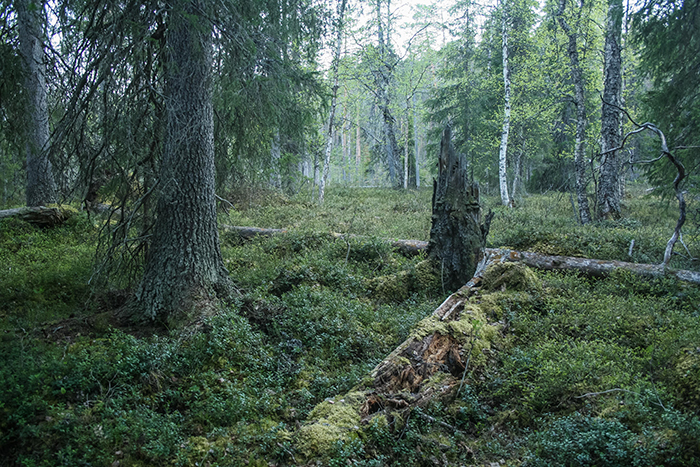
The taiga in Finland has two dominant trees: the Scots Pine and the Norway Spruce. The latter occurs here in a very slender form – an adaptation to deal with the massive winter snow load. In comparison, the spruce is stronger than the pine, but the pine is hardier, especially in rocky, shallow soils. This means that even in the deep south, the pine is the dominant species except in secluded forests and river valleys. Lush spruce forests become increasingly rare further north and gives up the struggle altogether about halfway up in Lapland. Throughout the forests, there is a thin scatter of birch (mostly a pioneer species), Trembling Aspen and Goat Willow – all very important for wildlife.
The tunturi or fjells
Large areas of open fjells characterise the northern part of Lapland. Coniferous forests are limited to the valleys, an open and gnarled scrubland of birches climbs up to the flanks from there, but the uplands are covered in subarctic heathlands, alternating with scree fields in the slopes and boggy terrain in the depressions. The harsh climate of these uplands is not just a matter of air temperature alone. The strong winter winds blow away the protective snow layer in winter, leaving all taller plants susceptible to frostbite. This is the main reason for the lack of trees other than the stunted, ground-hugging forms of the birches on the slopes.
These tunturi are the southern outliers of the Arctic flora of northern Norway and northern Siberia. There are arctic butterflies here, but above all, this is an important breeding ground for the birds of the far north especially waders (Temminck’s Stint, Jack Snipe, Red-necked Phalarope, Golden Plover, Dotterel), Arctic Skua, Gyr Falcon and Rough-legged Buzzard.

Lakes and rivers
Lakes come in endless shapes and sizes in Lapland. They are covered in ice from the start of winter until deep into spring. The extremely cold water and the long period of ice cover make these lakes a hostile environment for many plants and animals. For that reason, many lakes have fewer organisms and less diversity than those in southern Finland. An exception is where rivers flow into the lakes. Such places are much richer in food and thus attracts more organisms. Moreover, the force of the flow breaks up the ice much earlier in the year than elsewhere and migrating birds in spring first occupy these food-rich, ice-free spots before spreading out to their breeding grounds.

Also, the quieter, boggy or (very locally) reedy parts attract wildflowers and birds.
On the north slopes it reaches almost down to sea level, but on the south side it reaches no lower than 700 metres above sea level. This zone attracts a wide variety of birds especially in the barrancos. Most villages are situated in this zone, which makes the natural vegetation here more threatened than the rest.

Bogs
When the land ice retreated after the last ice age, it left a rolling landscape with countless depressions. They filled up with water, and many of these lakes developed into bogs.
Bogs are frozen stiff for much of the year and soggy and waterlogged for the rest. It is too wet for trees, except perhaps a few stunted pines on the driest parts. Bogs are naturally poor in nutrients, although the edges of it are often slightly richer due to the runoff water from the nearby hills. The core, by contrast, is usually very poor, with shallow bog lakes and lots of peat mosses.

In Lapland, two types of bogs or mires dominate. In southern and central Lapland you’ll find Aapa mires, many of which are very large and have ribbons of drier land that separate large wet ‘basins’. In the north you’ll find Palsa mires; large bogs characterised by peat mounds that cover huge chunks of ice. Many wetland birds breed in the immense and impenetrable bogs, and they are also home to many of Lapland’s rare butterflies, dragonflies and wildflowers.
The naturalist top 10
Ten highlights of your visit to exploring Finnish Lapland and Kuusamo.
There is no place in Europe where such vast areas of wilderness can be found. Whether you go out on existing trails through little visited areas or take it a step further and go trekking away from existing paths – the peace and solitude is superb and perhaps even overwhelming.
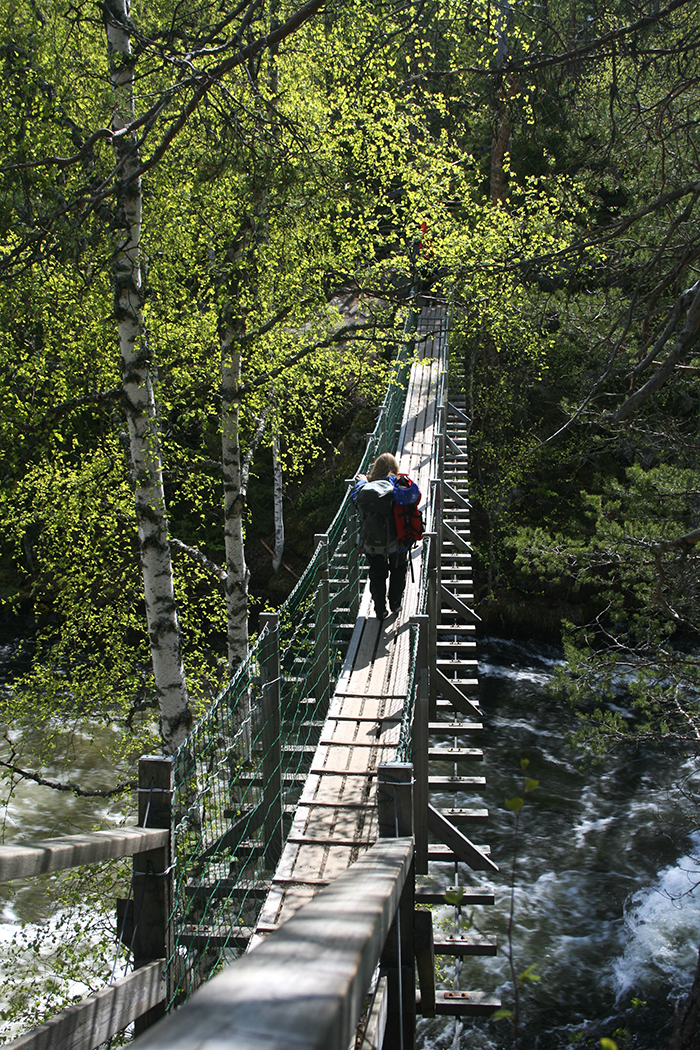
Bogs are both rich in wildlife and notoriously difficult to explore because they are so wet. In the National Parks of Finnish Lapland, there are many boardwalks through these mires, some of which are many kilometres long, offering an ideal means by which to explore this fine habitat.
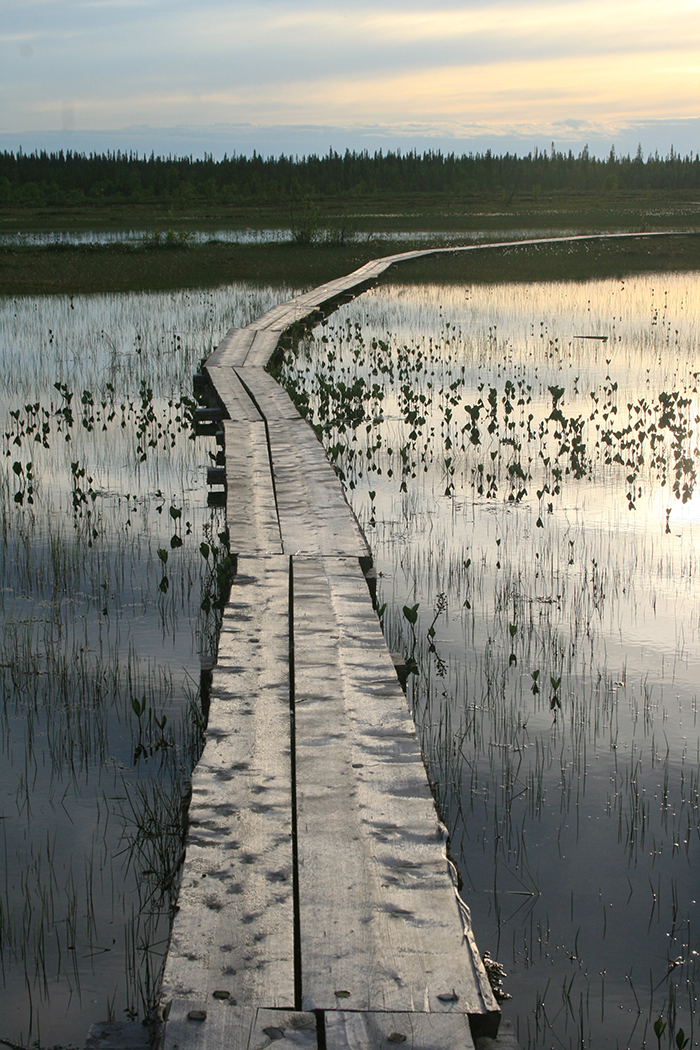
Finnish Lapland is (in combination with adjacent Arctic Norway) the prime birdwatching region of northern Europe.
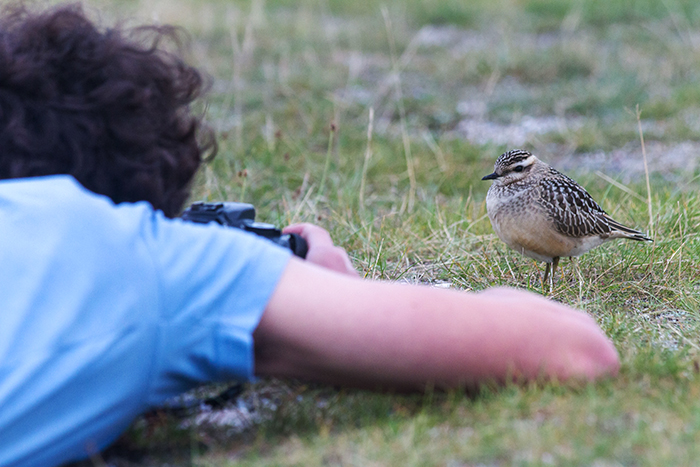
The Saami are one of the few ancient indigenous peoples in Europe. Their rich culture, centred around the herding of Reindeer, is seen in the northern part of Lapland, and in the beautiful Siida Museum in Inari.
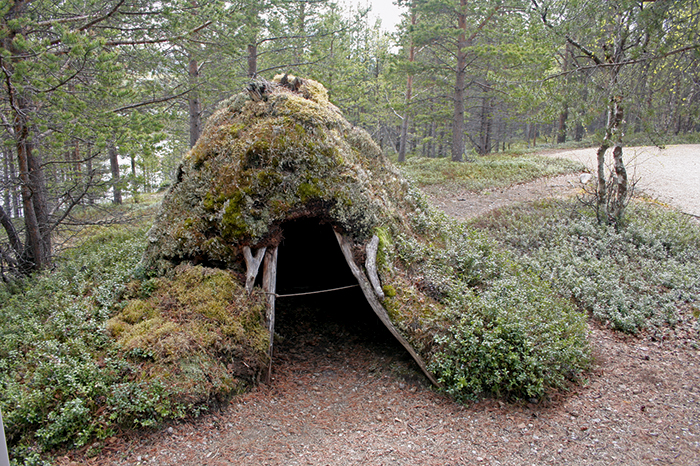
Various organisations, especially in the Kuusamo region, offer the chance of watching large predators in the wild, from a hide.
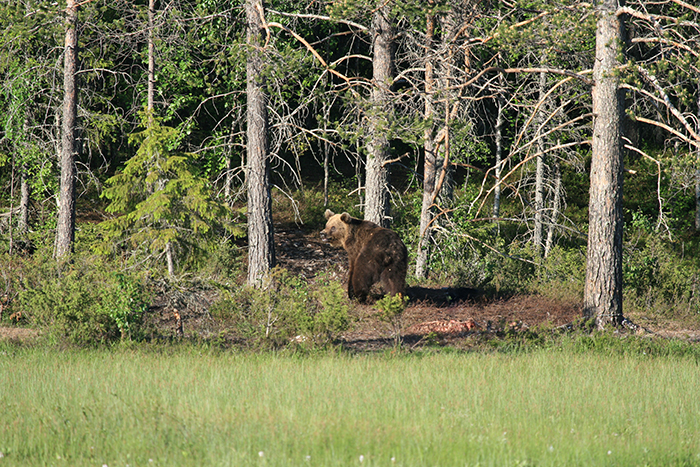
Lapland in winter is magical. The silence, the snow sculptured spruce trees and, above all, the light is superb and beautiful. With a little luck, you can witness the enchanting northern lights playing over the still landscape.
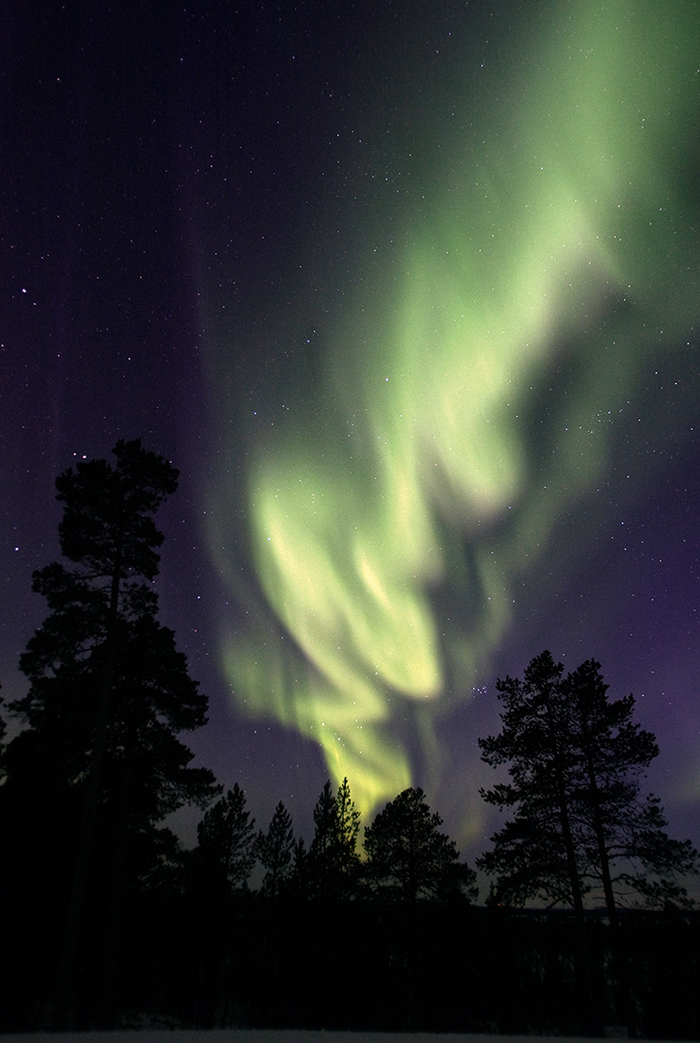
In summer, the sun doesn’t set, and the night gets a whole different meaning. The light is dimmed, the birds are silent, and everything comes to rest. And then, in the north, just above the trees, the sun peeks out from behind the clouds, setting the forest in a golden light…
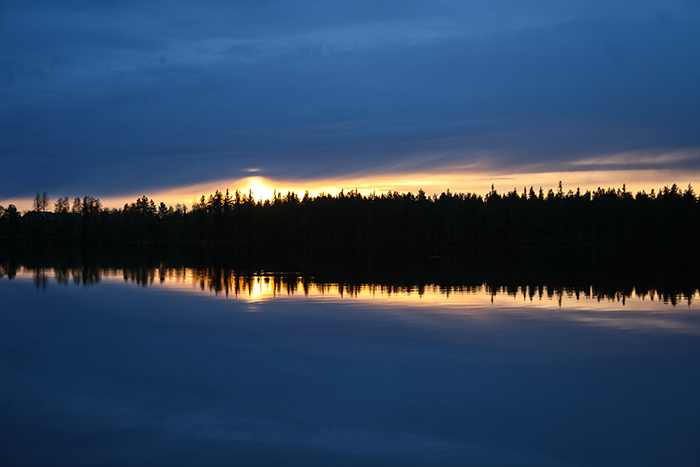
Another enchanting season is the short period known as the Ruska – the short autumn (best in the second half of September) in which the Birches, Rowans and Alpine Bearberries turn flaming red and blazing yellow.
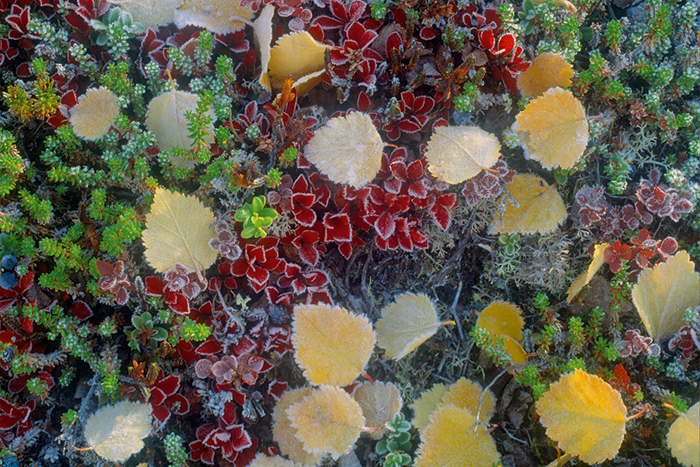
The fjells in the northern part of Lapland, especially the Saana Fjell in the far northwest, are an unexpected hotspot for butterflies. Arctic specialities like Pale Arctic Clouded Yellow, Arctic Blue, Lapland, Arctic and Dusky-winged Fritillary are just a few of the northern delights.

Spending some nights in huts in one of the National Parks is a brilliant experience. The peaceful atmosphere, cooking dinner over a wood fire, a visit to the sauna (and cooling off in the nearby bog pool) is the quintessential Lapland experience. All observed by a flock of inquisitive Siberian Jays of course.

Birds, bears and berries – The flora and fauna of Finnish Lapland and Kuusamo
The vast wilderness of Lapland is home to an exciting wildlife. A good number of Europe’s migrating birds breed here, and the large size of undisturbed wilderness makes it a refuge for large animals like Elk, Wolf, Wolverine and Brown Bear. The Finnish part of Lapland has a more continental climate – very cold winters and short but quite warm summers. Several plants and birds that are home to Siberia just make it into Finland here – making this (and adjacent Norway) the most exciting part of the region.
Wildlife of Lapland and Kuusamo
The general pattern across the northern hemisphere is that the further north you go, the lower the biodiversity becomes. In the far north, the number of species is generally low, but those that do occur, are very special. But there are exceptions to this, and Finnish Lapland is one of them. Although it is true that in random patches of forest, there is often a very limited range of wildlife, Finnish Lapland, as a whole, has a superb collection of species. Many of which are, however, thinly spread, or occur in very specific spots (which are – fortunately – described in the Crossbill Guidebook to Finnish Lapland).
Lapland’s flora
Over much of Finnish Lapland, the flora is beautiful, but uniform. Berries (Bearberry, Bilberry, Cowberry), horsetails, various species of ferns, clubmosses, mosses and lichens cover the forest floor. Mixed in with them is a limited number of wildflowers, among which Twinflower, Lapland Lousewort, Chickweed Wintergreen and Dwarf Cornel are the most eye-catching. In the bogs, Labrador Tea, Cloudberry, Bog Bilberry, Common Butterwort and various sundews and cotton grasses dominate.
Most of the soils are acidic and poor in nutrients. Locally, however, the cards are dealt differently, and that’s where the specialties occur. Along rivers where there are more nutrients, you’ll find the impressive St Charles Sceptre – a very stout species of lousewort. In meadows, the bright blue Jakob’s-Ladder brightens up the scene, together with Globeflower, Harebell and various herbs.
In the northwest and southeast there are limestone areas. Among various other special wildflowers, the orchids stand out here. In the northwest (Saana Fjell), Frog, Northern Small White and Fragrant orchids, Coralroot and a variety of marsh orchids grow. The southeast (Oulanka) is home to Lady’s-slipper and Fairy Slipper – two exquisitely beautiful orchids.

Birds of Finnish Lapland
Both taiga and tundra birds are present in Finnish Lapland, making this such a spectacular region for birdwatchers. The diversity is remarkably high, although the density in which the birds occur is much lower than in the temperate zone. In that sense, birdwatching in the far north is surprisingly comparable to birding in the tropics – a high diversity but low numbers per species.
The most common taiga birds in Finnish Lapland are Redwing, Brambling, Redstart, Pied Flycatcher, Willow Warbler, Siskin, Tree Pipit, Crossbill, various tits (including Siberian, although that species can be quite hard to find), Waxwing, four kinds of grouse (Black, Hazel, Willow and Capercaillie), Great Spotted and Three-toed Woodpeckers. Widely present, but rather uncommon, are Parrot Crossbill, Pine Grosbeak, Little and Rustic Buntings, Red-flanked Bluetail and the northern owls (Ural, Great Grey, Tengmalm’s and Hawk).

The bogs and lakes are Lapland’s prime breeding location of several waders and ducks. Wood Sandpiper and Snipe are most common, but Greenshank and Spotted Redshank are frequent too, often perching high in the pines in the bogs. Among the waterfowl, Goldeneye and Tufted Duck (small lakes) and Black-throated Diver (large lakes) are the most commonly seen.
The fjells and fjell lakes are home to a very different set of birds. The stunted birches are full of Willow Warblers, Redpolls and Bluethroats. This is also where Willow Grouse are most at home. Whimbrels, Red-necked Phalaropes, Golden Plovers, Dotterel, Broad-billed Sandpiper and Temminck’s Stint make up the diverse wader community. Long-tailed Skuas breed on the fjell heathlands, as do, low numbers of Rough-legged Buzzards and Gyr Falcons.

Butterflies
The 24 hours of light in summer makes Finnish Lapland a much better region for insects and butterflies than you might expect. Especially the fjells in the northwest and north host a large range of species, but, like the birds, their numbers are rather low. Many fritillaries (e.g. Arctic, Lapland, Frigga’s, Freija, Dusky-winged, Polar and Small Pearl-bordered), blues and graylings can be found here. In the taiga, the warm heathlands and the peatlands are the places to find butterflies.

Dragonflies
The classic dragonfly experience is an Azure Hawker warming itself on the boardwalk. A classic walk through the peatlands will deliver large numbers of whitefaces and clouds of little bluets of various species together with the occasional Moorland and Bog Hawker. Emeralds form another Lapland speciality as, besides the common Downy, there are Northern and Alpine Emeralds. The northern fjells are the sole European home of the Treeline Emerald, an essentially Siberian species.
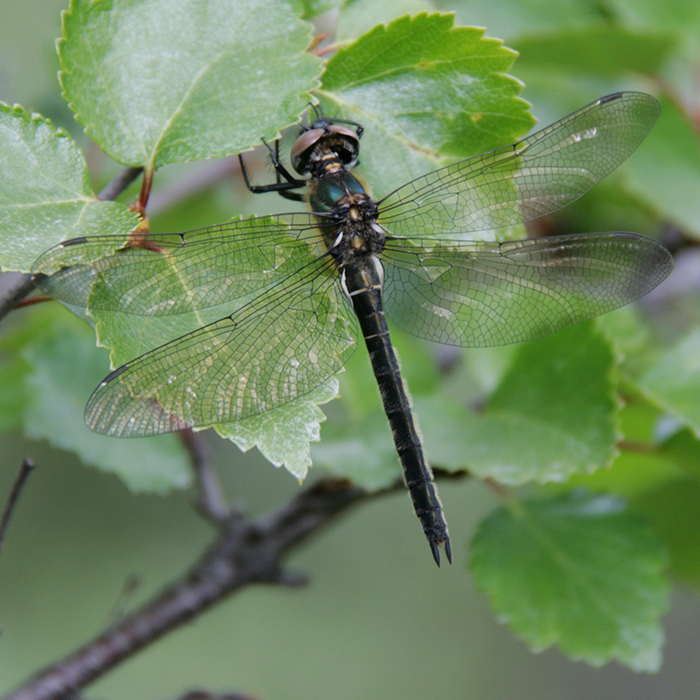
Top 10 species
Ten superb plant and animal species of Lapland and Kuusamo.
Hillsides in old mossy spruce forests are the home of this beautiful songbird with blue upperparts (restricted to the tail in females/juveniles) and orange flanks. It is widespread in Siberia, but in Europe, outside Russia, it breeds almost exclusively in Finnish Lapland (where it has hugely increased).

Perhaps the most impressive bird of the taiga, this massive owl is best found in winter with the help of local birdwatchers.

The Reindeer is the one animal you are almost certain to see – a lot. They roam free in Lapland but are kept as livestock, being ‘rounded up’ in corrals by the herders once a year. The wild Forest Reindeer occurs in central Finland south of Lapland.

The Wolverine is a large member of the marten family that lives exclusively in northern forests and fells. It is rare in Finland but can be seen from some of the predator hides. Wolverines have a reputation for killing Reindeer and are therefore not loved by the Reindeer herders.
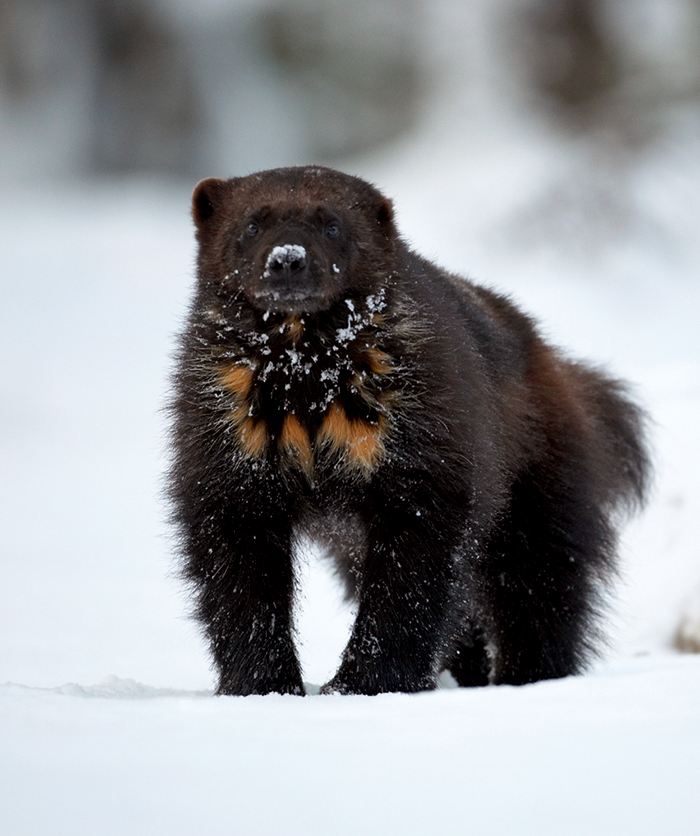
Brown Bears are like Wolverine rather uncommon because of problems with the Reindeer herders. They are most common near the Russian border (there are fewer Reindeer herders across the border, thus more bears).

Elk (Moose in American English) are widespread all over Lapland, with the largest numbers in the south. It prefers large marshes and river valleys. It is remarkably hard to spot as it is very shy (you’ll see its marble-sized droppings much more). Look for it by scanning riverside marshes and lake margins with your binoculars.

The cock Capercaillies are spectacular birds, which you may find with luck in early spring. Their numbers fluctuate and they hide well in the forest, except during the mating season when they lose all fear. The brown females are sometimes seen along forest roads.
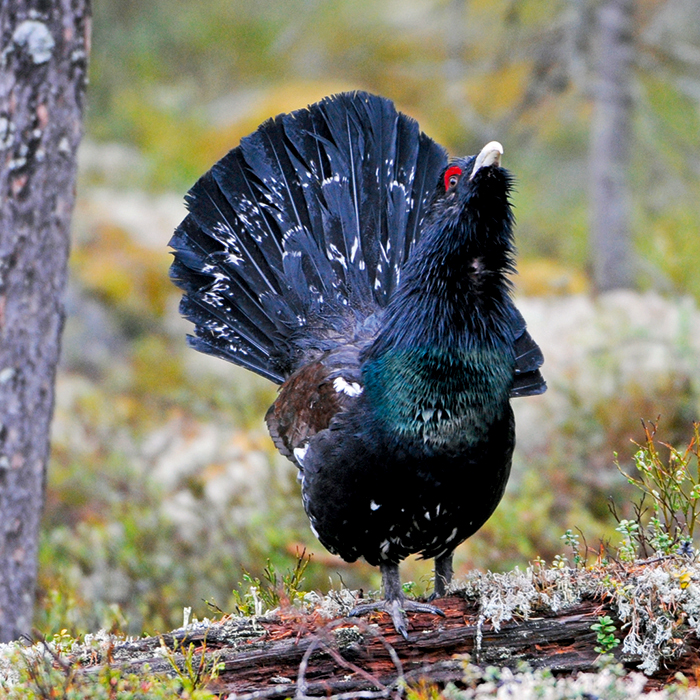
The Fairy Slipper (or Calypso Orchid) is a large pink orchid of the northern coniferous forest. It grows exclusively on limestone soil, which is rare outside Oulanka National Park, so this is where you must go to see this superb orchid.

Most plants in Lapland (the previous species excluded) are rather modest in appearance. Not so the Saint Charles Sceptre – a large species of lousewort that flowers on lakeshores, ditches and other marshy vegetations. It is quite widespread.
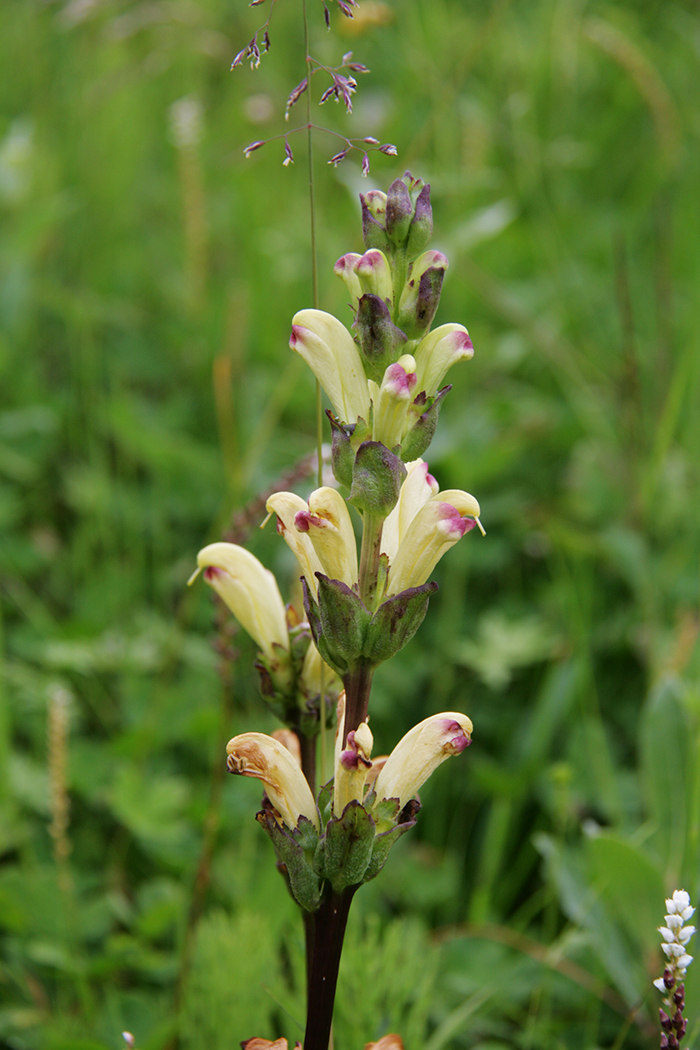
Between mid-summer and early spring, the Siberian Jay is like your shadow in the taiga. It goes where you go, especially if you are setting up camp somewhere in the forest. It is inquisitive, social and great to observe (as it observes you). Only in the breeding season, it can be shy and hard to see.

Routes and practicalities
Finnish Lapland has a superb network of trails, huts, hides, visitors’ centres and other facilities for nature-minded travellers. Lapland may be a wilderness, but you are provided with all modern conveniences you need to help you explore it. Within Lapland and Kuusamo there are, besides numerous smaller nature reserves, seven National Parks. From south to north, these are Syöte, Oulanka, Riisituntiri, Pallas-Yllästunturi, Uhro-Kekkonen en Lemmenjoki. All have good visitor facilities. In addition to these parks, there are wilderness areas that have fewer facilities but are certainly as beautiful.
In Finland, everymans’ right is protected by law; this means that everyone is allowed to walk the land, regardless of the owner (there are restrictions regarding the distance to houses and rules regarding how to behave, of course). This gives you a huge amount of freedom, but also the responsibility to use it wisely (see below).
Sustainable tourism
- Inform yourself before visiting a wildlife site (websites, visitor centres, tourist information, etc.).
- Use local guides and buy local, organic produce.
- Check the tide table when you plan to visit coastal locations.
- Keep your distance from cliff edges.
- Keep your distance from any wildlife especially to breeding birds. This particularly pertains to birds on the fells and palsa mires, which are easily disturbed.
- Watch where you step to avoid trampling flowers or nests of ground breeding birds.
- Bring your rubbish home.
- Stay on trails (especially in sensitive areas like fells and bogs).
The book
The Crossbill Guides are the most comprehensive nature travel guides available. Each Crossbill Guide has in-depth descriptions of the landscape, habitats, geology and all the species groups found in each region and links these to routes where they can be seen.
These routes are typically a mixture of itineraries on foot and by car with stops and short walks. Combined, these routes cover all the best sites for birds, mammals, butterflies, dragonflies and wildflowers. They are also set out to give you the finest examples of the ecosystems and geological features. In short, everything for nature lovers.
The volume that covers Finnish Lapland also covers Oulanka and Syöte National Parks near Kuusamo.
- 224 pages
- 22 detailed routes
- 27 site descriptions
The authors
Dirk Hilbers (NL, 1976), set up the Crossbill Guides Foundation and travels Europe to research the guidebooks. This is the 17th guide he worked on. As a biologist, when not in the field, Dirk Hilbers is a free-lance writer and lecturer in the field of nature education and environmental ethics.

























